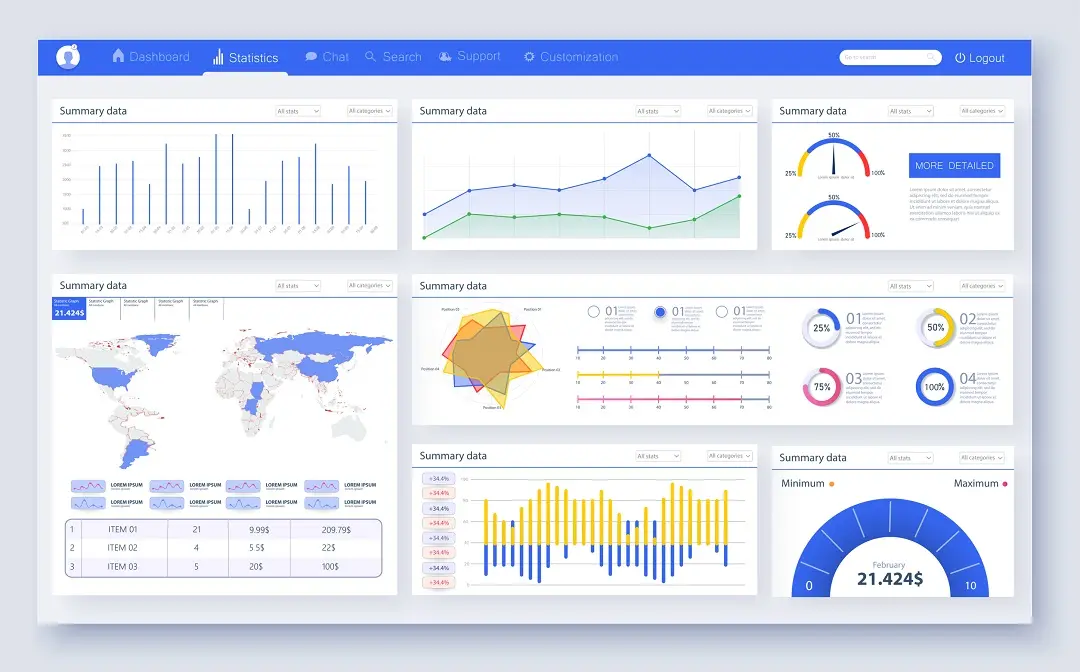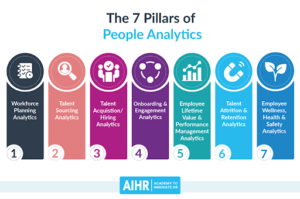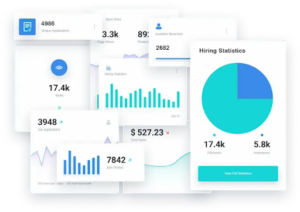The HR team! A company’s success heavily relies on its employees, which is why leading companies offer excellent benefits and maintain positive work environments. The HR team plays a crucial role in recruiting and retaining the best talent for a company’s growth and success.
The Human Resources Team is supposed to find, hire and manage such individuals who can contribute to a company’s growth. Today, recruitment teams can perform better using Job Data Analytics. Primarily there are 5 core areas that a HR team, in general, covers:
- Recruiting and Hiring– This relates to creating job posts, screening and interviewing candidates, checking if they are a good fit, or if they can cultivate the company ethos, and adding them to the right project. This was and still is one of the primary jobs of the HR team.
- Onboarding and Training– Once the employee is hired, there is usually some upskilling or learning required before he or she can make a difference. Even though this may be handled by members of different teams, the pathway is created and facilitated by members of the HR team.
- Employee Relations– Due to the volatility of the Job market as a whole, companies prefer dedicated employees who stick around for longer and can evolve to take up leadership positions. This is possible only when the HR team helps maintain cordial relationships between the management and the employees.
- Compensation and Benefits– The HR team not only takes care of deciding the compensation when hiring new employees but also factors in inflation and market rates along with performance reviews to decide on appraisal figures. This helps retain good talent in the long run.
- Compliance– Different countries and even states have different labor laws that must be followed when dealing with employees. These are rules related to hiring, contracts, termination, work environment, and more. HR personnel ensures that companies are compliant and do not become the target of lawsuits.
While all of these jobs are related to the administration and management of resources, data has seeped into Human Resources Management and a lot of these jobs have in turn converted to data crunching and people metrics. Instead of acting on their gut decision or ‘word-of-mouth’, Human Resource personnel today use data to back their decisions.
The Benefits of Using Data
The data revolution has enabled HR teams to use data to convert monotonous jobs into data analytics instead. For example, analysis of employee performance was usually done using crude methods such as talking to managers and peers at the end of the year. Today several task management tools are used by companies that enable human resources to compile data periodically to estimate the efficiency of employees and create detailed performance charts on a sprint-by-sprint basis (companies usually follow a 2-week sprint cycle to execute tasks). Some of the other ways in which HR professionals use data are:
- Recruitment– Recruitment has seen a massive boost thanks to job data analytics. Most of the mundane tasks related to hiring are now taken care of by automated processes. Shortlisting candidates or filtering out the best fit is as easy as ordering a shirt on Amazon, using tools that run on historical and real-time data. There are even new-age solutions that analyze the behavior of candidates taking interviews and match them with historical data to provide pointers on metrics like confidence and communication skills. In turn, the HR team can use its ‘human abilities’ to ensure the candidates are a ‘good fit’ for the team they will be joining.
- Training and Development– The HR team can use job market data to figure out what important skills one must have to join a particular team. Similarly, they can also make recommendations for upskilling if one wants to switch teams or change job roles, or move to a senior position. They also frequently use data to come up with certain curriculums and roadmaps that employees need to undertake.
- Engagement– An engaged employee is a happier and more productive employee. While office parties and outings are great modes of employee engagement, HR professionals are using data today to come up with more engaging activities and directly using employee feedback to ensure high engagement levels at all times. This has been even more critical as the pandemic has forced many to work from home and caused a feeling of disassociation among employees.
- Retention– Using data to identify factors that may be contributing to employee turnover numbers is critical today. Loss of important employees may set companies back by months– something the business may not always be able to sustain. Today, HR personnel is picking up data from the job market as well as internal feedback forms to ensure they can act on time and have a healthy retention rate.
People and People Analytics
Using people data to manage people is always a good idea since this allows HR professionals to gain deeper insights. People analytics help organizations with –
- Improving the human capital of the organization via workforce planning
- Checking and working on employee engagement and satisfaction levels
- Driving business success through talent sourcing, acquisition, and retention analysis
Source: AIHR
Some of the common data-driven practices that have been adopted are:
- HR teams can use data to decide which hiring channels are most efficient and help in sourcing top talent. This way if a new role opens up and the business team needs to fill it urgently, then HR professionals can tap into the best channels to source candidates quickly. Hiring Dashboards come in handy for such use cases.
- Workforce planning can range from which location to open a new office in, to what skills are missing in a particular team. All of these need to be handled by the HR team. Data helps in building the case behind these and more OKRS such as forecasting future workforce needs and creating plans of succession or Business Continuity Plans.
- Throwing money at employees to retain them is not a good idea. HR teams today use internal and external data along with ‘happiness dashboards’ to predict which employees may leave. They also keep track of metrics like retention rates across departments, projects, and managers. Data helps identify the root cause in many such cases which are then taken care of offline. Such information is also best displayed or shared using dashboards.
Benefits of HR Dashboards
We spoke of multiple instances where data can come in handy for the HR team. But asking HR professionals to delve deep into the data and analyze individual data points may not be feasible– that is the job of a data analyst. We must remember that data is useful only when it is easy to use. In this case, HR teams find data most useful when it is in the form of dashboards. These can be dashboards related to retention, hiring, engagement rates, productivity, salaries across teams or positions, and more.
The biggest benefits of converting raw data into these usable and shareable screens are
Efficiency: Data-driven HR teams can focus on critical points instead of menial time-consuming activities. This enables them to align their work items with business requirements and work on hidden pain points that exist in organizations.
Accountability: The dashboards not only help HR professionals in taking care of their day-to-day work but also track their progress in achieving their key metrics and goals over time. These are in turn presented to the Business team periodically and may result in a change of track if needed.
Data-Backed Decision Making: HR teams backed by Dashboards no longer need to use gut feelings or suffer due to human bias. Data-driven Human Resource management helps the team present its findings and offer counterarguments when needed.
Transparency: The HR team handles critical pieces like hiring and performance reviews. These may not always go smoothly. When backed by data, the HR team can be more transparent to whoever is sitting on the other side of the table.
Communication: HR Dashboards help in communication with the leadership team for tracking different OKRs as well as managers when something falls short. The dashboards work as an easy way of communication between departments that usually do not have a connecting fiber and may ordinarily face friction during interactions.
Articles like this one by Capterra can provide insights into which HR Dashboard solutions may suit you best. In case you are a tech-driven company, you may also create your dashboards on top of the raw data.
The Benefits of Tapping into External Talent Intelligence
Source: JobsPikr
Most teams are today working on bringing together multiple data sources to paint a final picture with numbers. In terms of HR personnel efforts, both internal and external data can come in handy. Internal data like performance, retention numbers, and skillsets keep the HR team informed about how the company is doing. On the other hand, labor market data such as salaries, in-demand jobs, top skillsets, benefits offered by companies, locations where top companies are opening offices, and more help HR personnel in providing valuable advice to the business team when they need to make vital decisions.
Our team at JobsPikr takes care of all your external talent intelligence requirements so that your HR team can focus on creating useful dashboards instead of worrying about the data. The DaaS software provides you with a real-time job data stream that you can filter, sort, and utilize to pull out usable metrics, information, or even keywords. When it comes to data utilization, be it internal or external, leaving any data on the table will result in your competitors moving ahead.





